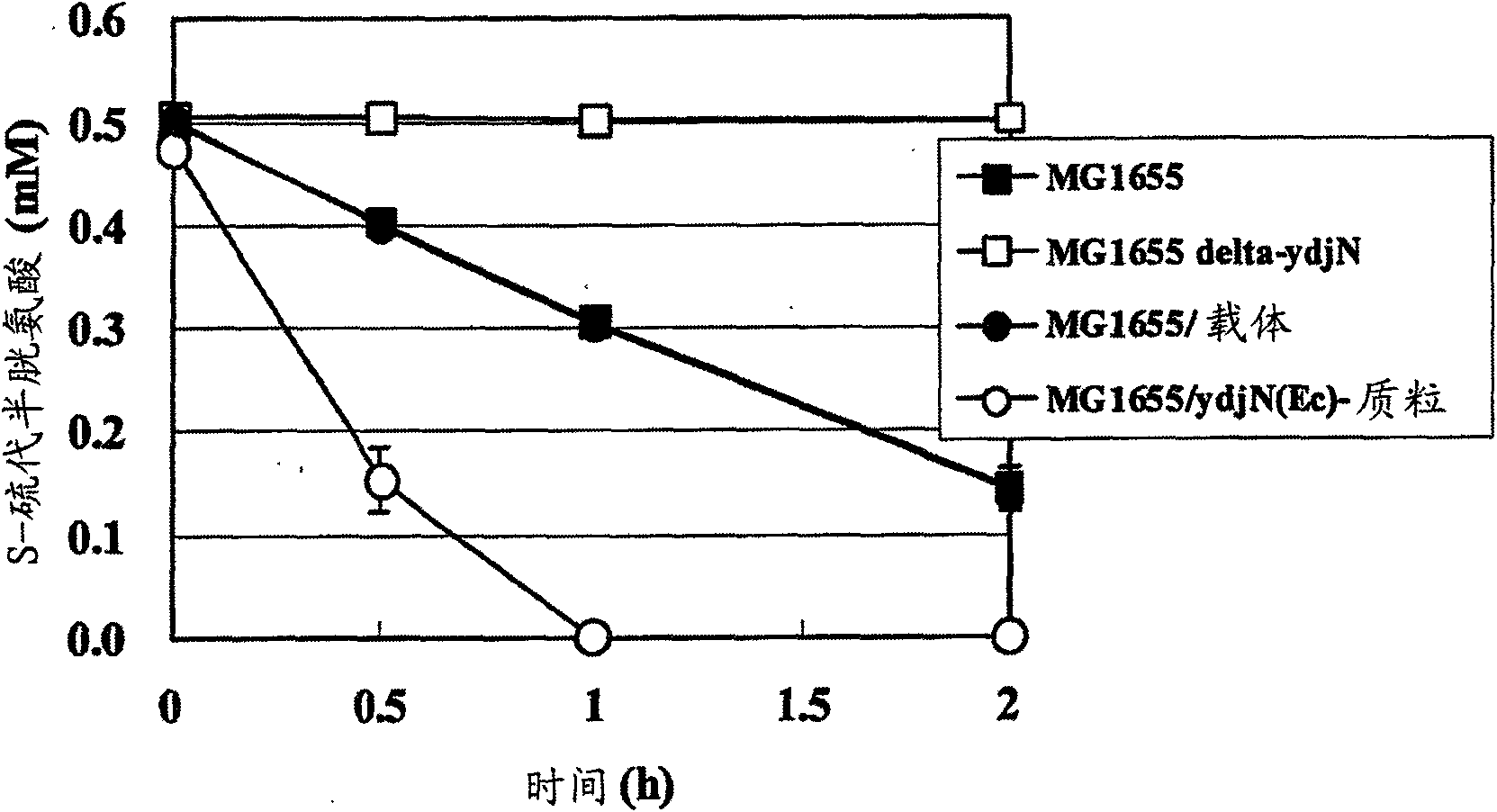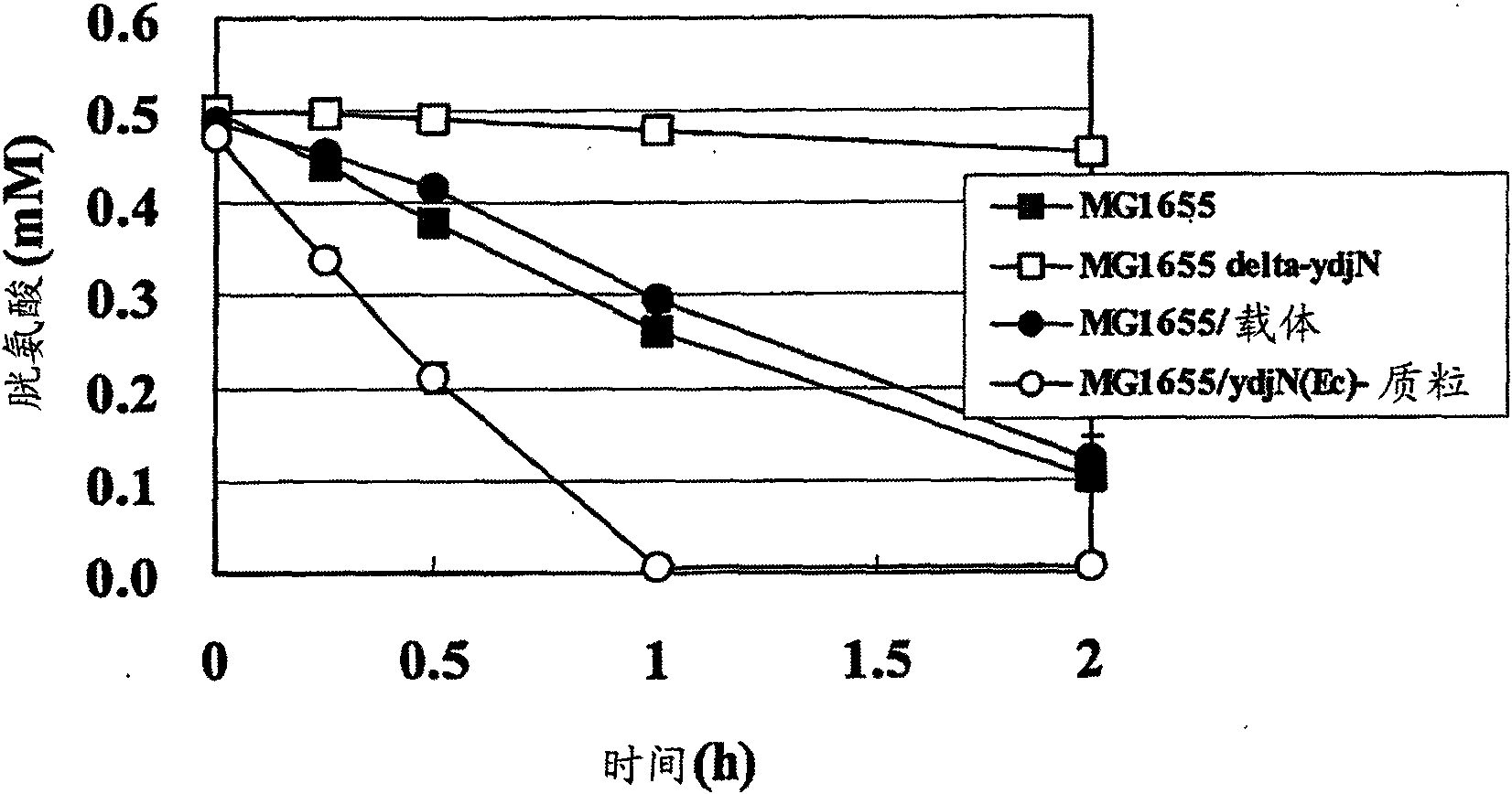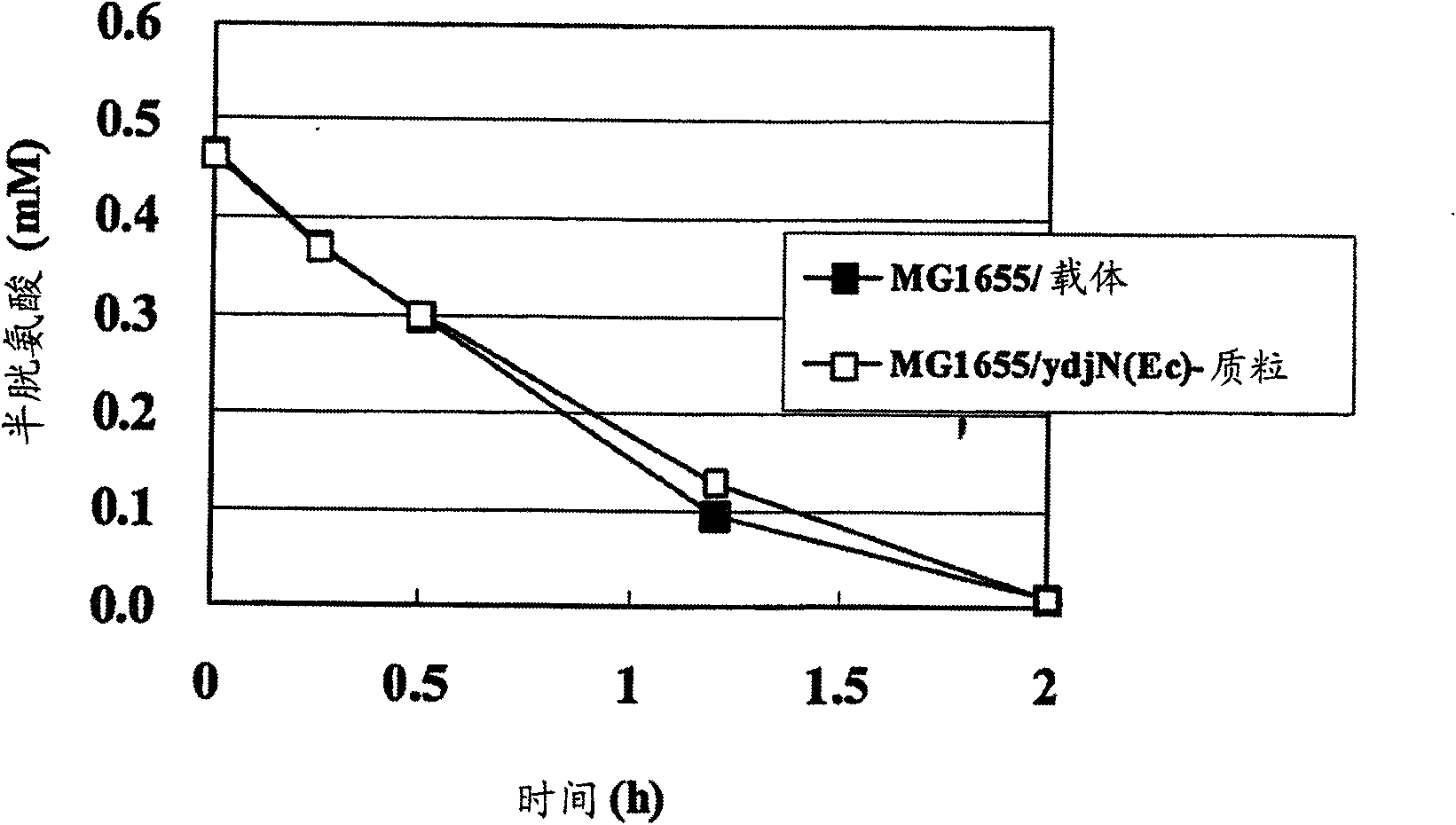An l-cysteine-producing bacterium and a method for producing l-cysteine
A technology of cysteine and cystine, which is applied in the field of L-cysteine producing bacteria and L-cysteine production, can solve the problems of undetermined genes and proteins, and achieve improved production capacity and high efficiency. The effect of production
- Summary
- Abstract
- Description
- Claims
- Application Information
AI Technical Summary
Problems solved by technology
Method used
Image
Examples
Embodiment 1
[0154] (Example 1) Identification of proteins with cysteine or cystine uptake activity
[0155] (1) Obtain a mutant strain that cannot use S-thiocysteine as a single cysteine source (1-1) Obtain a cysE gene-deficient strain from Escherichia coli MG1655 strain (ATCC No. 47076). The cysE gene defect was passed The method called "Red-driven integration" developed by Datsenko and Wanner et al. (Proc. Natl. Acad. Sci. USA, 2000, vol. 97, No. 12, p6640-6645) and a lambda phage-derived excision system (J. Bacteriol. 2000 184.5200-5203 (2002)). Red drive integration and use synthetic oligonucleotides as primers to obtain PCR products. The PCR products can be used to construct gene-disrupted strains in one step. The synthetic oligonucleotides are designed with a part of the target gene on the 5'side, 3' The side design has a part of the anti-biotin resistance gene. In addition, by combining a cut-out system derived from lambda phage, the avidin resistance gene introduced in the ge...
Embodiment 2
[0187] (Example 2) Cysteine production by Escherichia coli deficient in ydjN and / or fliY
[0188] (1) Construction of Escherichia coli cysteine production strain
[0189] In order to give ydjN and / or fliY deficient E. coli cysteine production capacity, a mutant cysE containing a mutant serine acetyltransferase encoding a reduced feedback inhibition of L-cysteine was constructed (US20050112731(A1)) The plasmid. Specifically, first, in the pACYC-DES construction method described in JP 2005-137369 (US20050124049 (A1), EP1528108 (A1)), a mutation encoding a phosphoglycerate dehydrogenase that is not subject to serine feedback inhibition will be carried. The steps of type serA5 gene (described in US Patent No. 6,180,373) were omitted, and plasmid pACYC-DE1 was constructed. Compared with the pACYC-DES carrying the above-mentioned mutant serA5, the cysEX gene encoding the feedback-inhibited mutant SAT gene, and the ydeD gene encoding the cysteine and acetylserine secretion fac...
Embodiment 3
[0218] (Example 3) Cysteine production of P.ananatis deficient in ydjN and / or fliY
[0219] (1) Production of P.ananatis cysteine producing strain EYPS1976(s)
[0220] The cysteine producing strain of P.ananatis was constructed according to the following method: cysE5 (U.S. Patent Application Publication No. 20050112731) encoding mutant serine acetyltransferase and encoding mutant 3-phosphoglycerate dehydrogenase were introduced Chem., 1996, 271(38):23235-8), and enhanced yeaS (JP2000189180(A), which encodes secretion factors of various amino acids, and cysPTWA, which encodes sulfur uptake factors. Below, the construction method is described in detail.
[0221] (1-1) Introduce CysE5 and YeaS into P.ananatis SC17 strain
[0222] First, the plasmid used to construct the above strain was constructed. The method is as follows.
[0223] Using the chromosomal DNA of Escherichia coli MG1655 (ATCC No. 47076) as a template, using P1 (agctgagtcg acccccagga aaaattggtt aataac: SEQ ID NO: 3...
PUM
 Login to View More
Login to View More Abstract
Description
Claims
Application Information
 Login to View More
Login to View More - R&D
- Intellectual Property
- Life Sciences
- Materials
- Tech Scout
- Unparalleled Data Quality
- Higher Quality Content
- 60% Fewer Hallucinations
Browse by: Latest US Patents, China's latest patents, Technical Efficacy Thesaurus, Application Domain, Technology Topic, Popular Technical Reports.
© 2025 PatSnap. All rights reserved.Legal|Privacy policy|Modern Slavery Act Transparency Statement|Sitemap|About US| Contact US: help@patsnap.com



